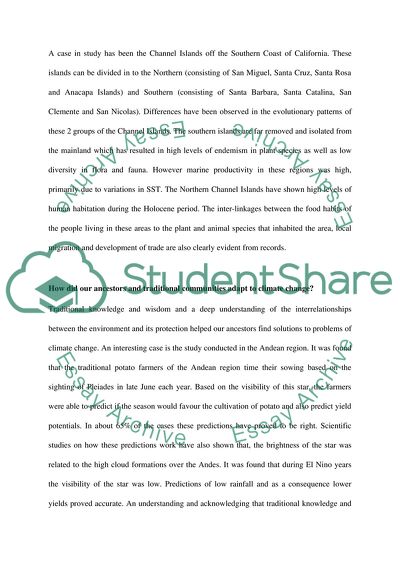Cite this document
(Ecological Effects of Climate Change Affecting the World Today Assignment Example | Topics and Well Written Essays - 1250 words, n.d.)
Ecological Effects of Climate Change Affecting the World Today Assignment Example | Topics and Well Written Essays - 1250 words. https://studentshare.org/environmental-studies/1723406-ecological-effects-of-climate-change-affecting-the-world-today-anthropology-theme
Ecological Effects of Climate Change Affecting the World Today Assignment Example | Topics and Well Written Essays - 1250 words. https://studentshare.org/environmental-studies/1723406-ecological-effects-of-climate-change-affecting-the-world-today-anthropology-theme
(Ecological Effects of Climate Change Affecting the World Today Assignment Example | Topics and Well Written Essays - 1250 Words)
Ecological Effects of Climate Change Affecting the World Today Assignment Example | Topics and Well Written Essays - 1250 Words. https://studentshare.org/environmental-studies/1723406-ecological-effects-of-climate-change-affecting-the-world-today-anthropology-theme.
Ecological Effects of Climate Change Affecting the World Today Assignment Example | Topics and Well Written Essays - 1250 Words. https://studentshare.org/environmental-studies/1723406-ecological-effects-of-climate-change-affecting-the-world-today-anthropology-theme.
“Ecological Effects of Climate Change Affecting the World Today Assignment Example | Topics and Well Written Essays - 1250 Words”. https://studentshare.org/environmental-studies/1723406-ecological-effects-of-climate-change-affecting-the-world-today-anthropology-theme.


